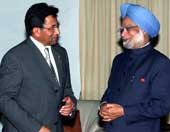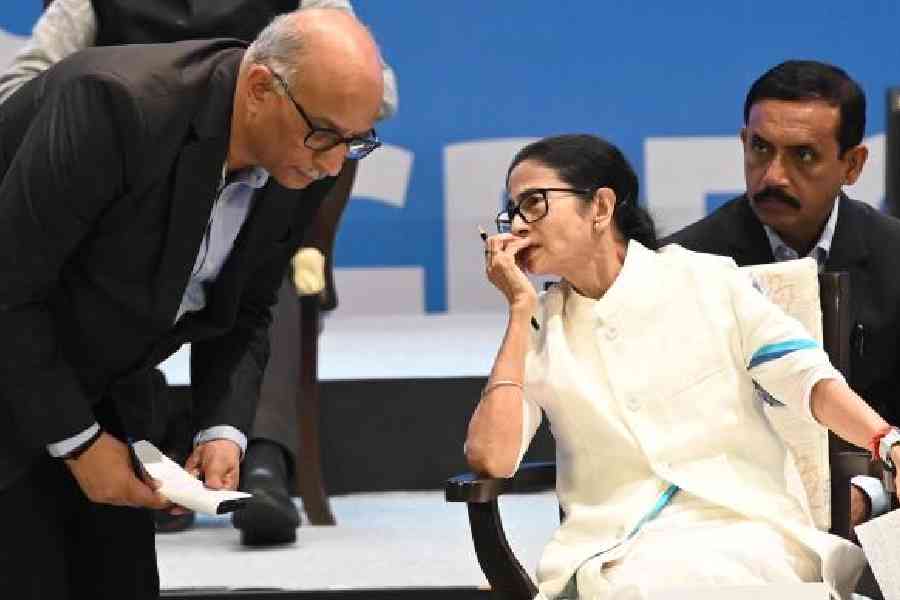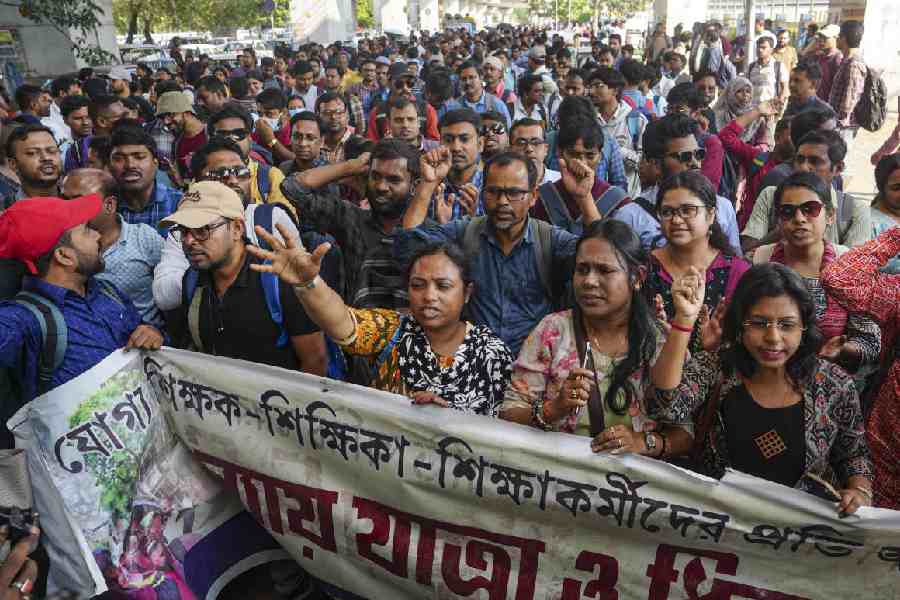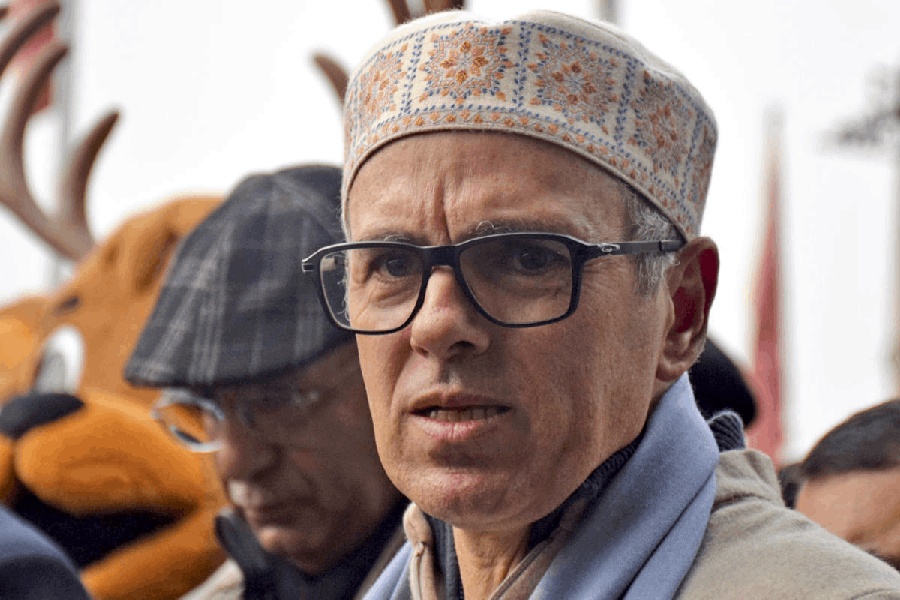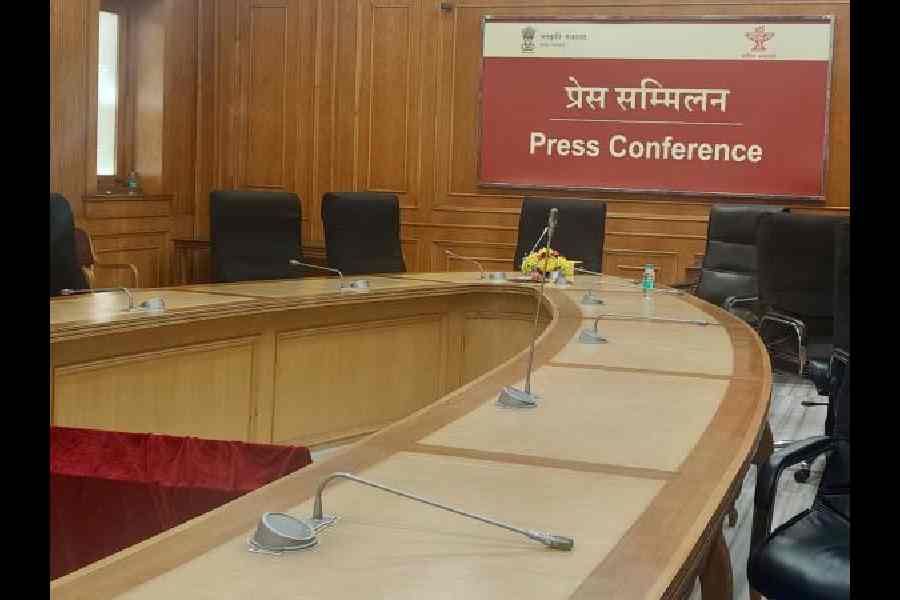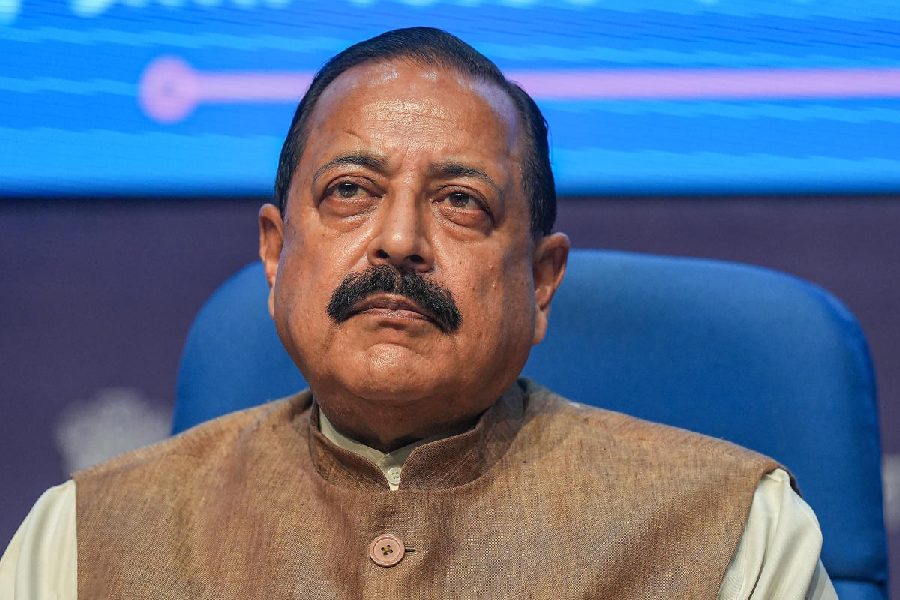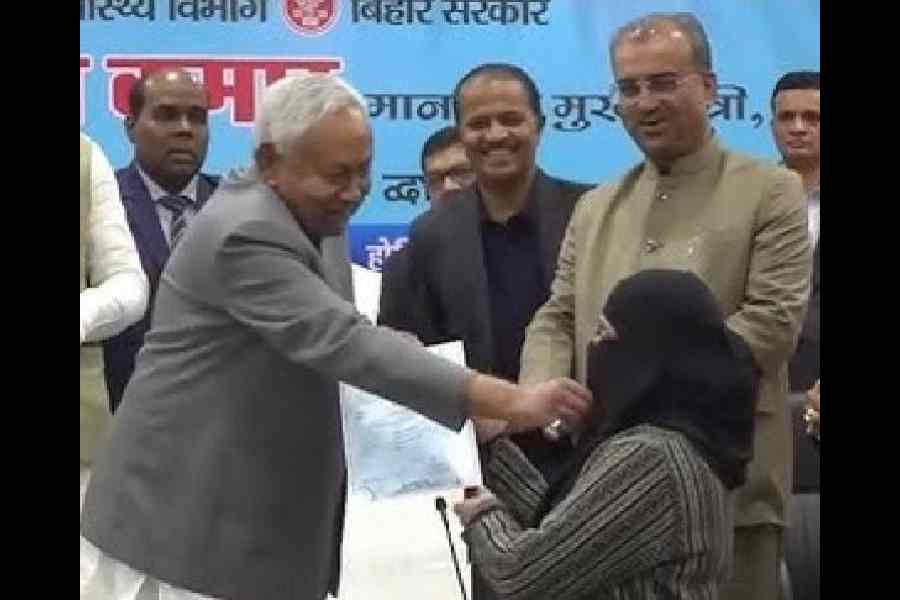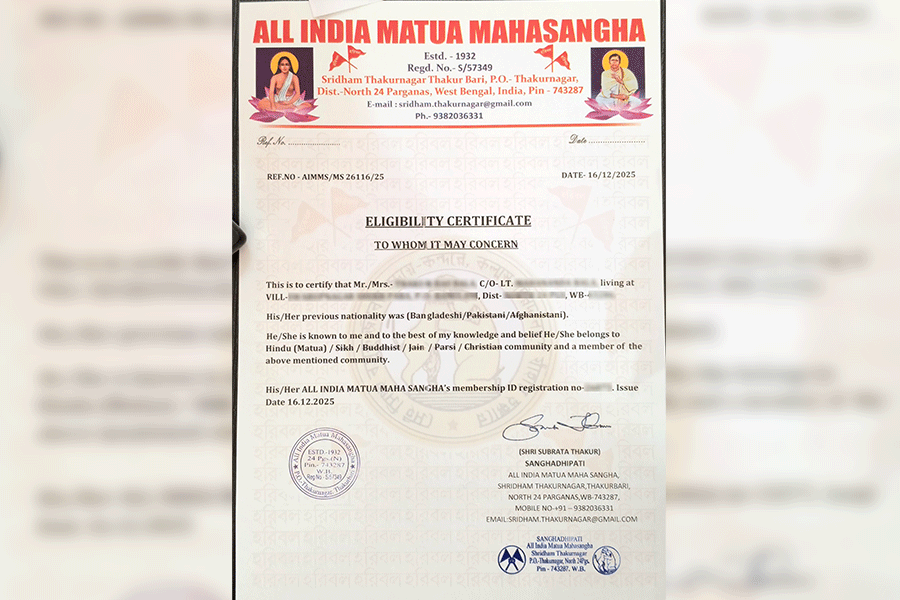|
|
| Side show |
It could be an interesting, if somewhat amusing, exercise to travel through India during the coming Lok Sabha elections and watch the communists alternately fight and help the Congress in different states. Friends here, enemies there, they could offer the most peculiar electoral story.
Indian voters are no strangers to parties or candidates switching sides before elections. The coming of coalition politics has also seen yesterday’s friends becoming today’s enemies and vice versa. But it is not often that you have a scenario in which the same party is a friend at one place and an enemy at another in the same elections.
Of course, the communists have their own explanation for all things which would strike ordinary mortals as not just contradictory but brazenly opportunistic. The politburo of the Communist Party of India (Marxist) and the central executive of the Communist Party of India did just that at their meetings in Hyderabad around the same time last month.
The bottomline of the arguments is old, familiar stuff. The Bharatiya Janata Party is the main enemy, the argument goes, and the Congress is its main opponent. So the left parties must try everything to avoid the splitting of anti-BJP votes and therefore help the Congress. It is pretty much the same argument that the left had offered to justify jumping, alongside the BJP, into the grand alliance against the Congress at another time when the Congress was the number one enemy. Things would, however, be different in West Bengal, Kerala and Tripura, where the left is traditionally strong. In these three states, both the BJP and the Congress continue to be the left’s enemies.
It is not a perfect ideological position, we are told, but then elections, like most other things in life, are imperfect affairs. Ideally, the communists would have liked to join a third front outside the BJP and the Congress. But then, where is the third front?
So, helping the Congress is a decision thrust on the communists by a situation where there is no alternative. Cold logic would, however, see it as an abject surrender by a political force that has long claimed to be the real alternative to bourgeois parties.
In plain terms, this electoral tactic of the communists reduces them to the Congress’s tail . That is what the CPI(M) had charged the CPI with for decades when the latter was an ally of the Congress. That is what even partners of the Left Front such as the Forward Bloc and the Revolutionary Socialist Party of India are charging the CPI(M) with.
Of course, there could be small gains from this electoral line — a seat in Rajasthan, two in Punjab or three in Tamil Nadu, where the communists cannot win anything on their own. But it is a far cry from the “spread effect” the CPI(M) had envisaged at its plenum at Salkia in West Bengal’s Howrah district in 1978. Those were heady days which saw the Left Front ride to power in West Bengal on the crest of a countrywide anti-Congress wave.
The Salkia plenum argued that the left had never had such a good chance of spreading to other parts of India, particularly in the Hindi belt. In those times of hope, the success of the left in Bengal was seen as the harbinger of greater glory elsewhere. The left would rise, the plenum proclaimed, over the ruins of the Congress.
A quarter of a century later, the communists remain confined to their three states. In fact, instead of spreading wings, they saw them clipped in states like Andhra Pradesh, Bihar, Punjab and Tamil Nadu, where they once were a powerful force. Not only did the BJP rise over the ruins of the Congress, regional parties too nudged the communists out as a possible third force. Having failed to provide the people a third alternative, they have now meekly surrendered to the TINA theory and to the Congress.
But then the communists argue that they would not quite be the Congress’s tail. Since the Congress is no longer the strong political body that it once was, it would be possible for the tail to keep the head in check. Moreover, compulsions of coalition politics would make the tail as powerful as the head.
There could be some logic in that argument because coalitions, led either by the BJP or by the Congress, have to give some space even to the smallest of partners. Five years of the National Democratic Alliance government and the flip-flop of small parties have amply proved that. But by the same logic of the TINA theory, the left would be powerless to make any difference to the Congress should any such occasion arise. If staying with the Congress is a choice forced on the communists by the imperative of defeating the BJP, then they will have to stay with them, no matter what the Congress’s policies are.
The communists are thus fooling themselves and the people by saying that they can play an interventionist role in case there is a Congress-led government in New Delhi after the coming elections. The position of the RSP and the Forward Bloc is at least transparent since they harbour no such illusions either about influencing the Congress or about the left’s own importance in such a scheme of things.
So when a voter in West Bengal or Kerala is asked to choose between a Congress and a communist candidate, he or she is actually being asked to play the fool. First, given the compulsions of the two sides, it does not really matter who wins. More important, in the post-election scenario, the contestants would have to be on the same side. As Mamata Banerjee says, correctly for a change, the Congress would be the CPI(M)’s “B Team” in Bengal, while the roles will be reversed at the national level. Mulayam Singh Yadav may have his game plans vis-à-vis the BJP, but he is right when he says that the Marxists are more keen on helping the Congress than try and revive the third front.
The conventional wisdom is that it is pointless to talk about a front that does not exist. So the only way the left can really be relevant in today’s situation is by taking its place in one of the two national-level fronts, one led by the BJP and the other by the Congress. This argument makes sense, but then it makes all other parties largely irrelevant outside the equations of regional politics.
The United Front did not exist in 1996 until the post-election scenario forced its emergence. No one would say that a third front would have had much of a chance in these elections. But the communists could have taken the lead in trying it out yet again. It may not have been a winning combination, but it would have been politically honest.
After the elections it could throw its weight behind the Congress if the situation so demanded. But it would at least do so as a free agent and not as a helpless adjunct of the Congress.

